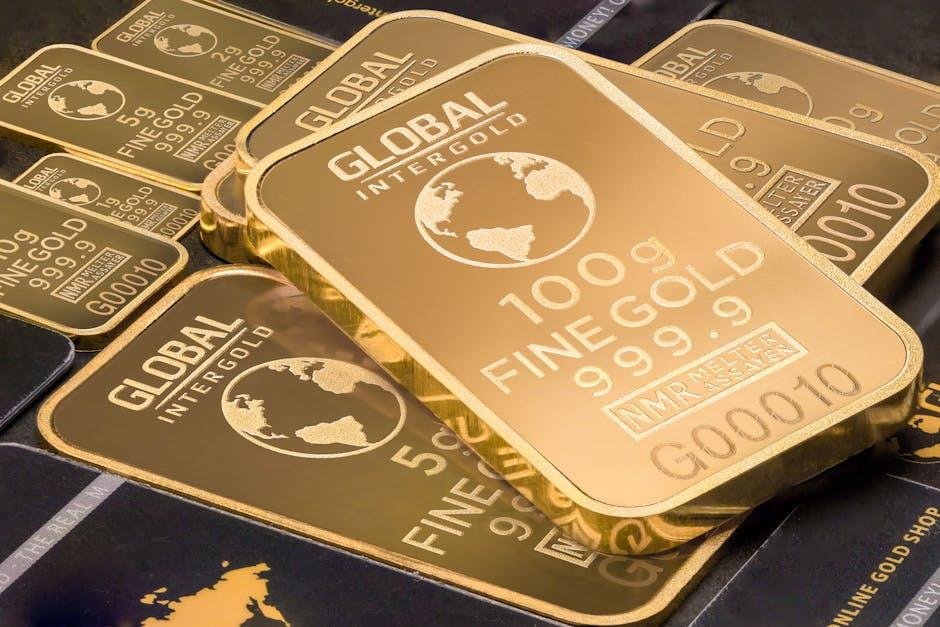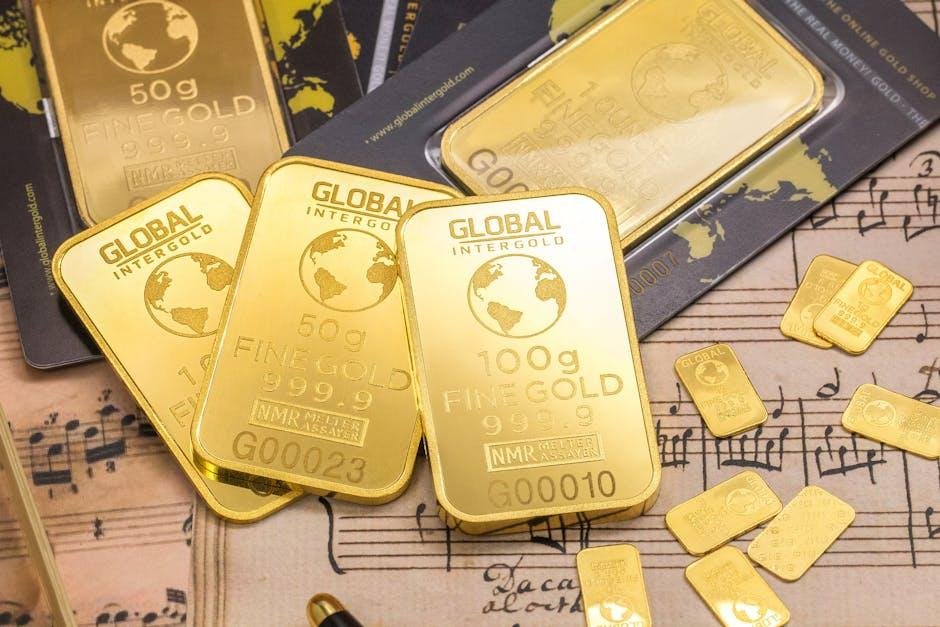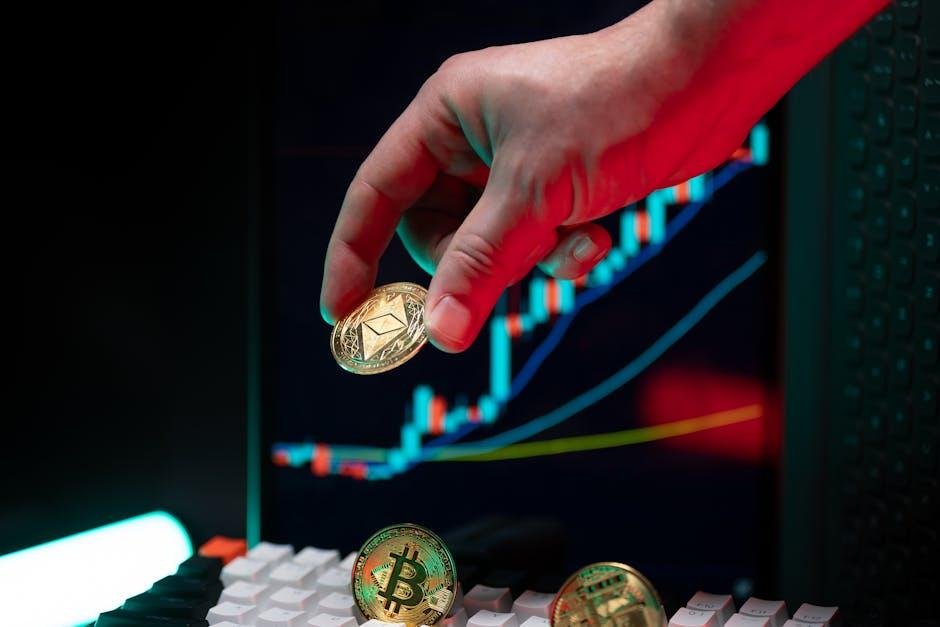In a world where financial markets ebb and flow with the tides of uncertainty,the allure of gold persists,glimmering brightly as a symbol of security and wealth.As centuries have passed, this precious metal has transcended its role as mere ornamentation, emerging instead as a cornerstone of investment strategy for astute investors. whether it’s the uncertain economic landscape, inflation fears, or geopolitical surprises, more individuals are turning their gaze towards gold, seeking to reinforce their portfolios with this time-honored asset. But before you dive into the glittering world of gold investment, it’s essential to understand the nuances that shape this market. From the various forms of gold you can invest in—such as coins, bars, or ETFs—to the risks and benefits that come with each choice, this article aims to illuminate key insights and considerations for anyone thinking of adding a touch of gold to their financial future. Join us as we explore the golden opportunity that lies ahead.
Understanding the Fundamentals of Gold as an Investment
Gold has long been regarded as a safe-haven asset, especially in times of economic uncertainty. Its basic value lies in several key characteristics that make it a unique investment option. Scarcity is a noteworthy feature; gold is a finite resource, and its mining process is labor-intensive, which helps maintain its value over time.Additionally, gold has a long history of being viewed as a store of value, ofen appreciated during inflationary periods when the purchasing power of currency declines. Investors are drawn to gold not only for its past importance but also for its role in diversifying portfolios, offering a hedge against volatility in customary markets.
When considering gold as an investment, one can choose from various forms, each with its own appealing features and risks. Physical gold, such as coins and bullion, allows for direct ownership but comes with storage and security considerations. Gold ETFs (Exchange-Traded Funds) offer a more liquid alternative, providing exposure to gold prices without the need for physical possession. Another option is gold mining stocks, which can yield higher returns but also introduce additional risks tied to the performance of the companies involved. Investors should weigh these options carefully and consider how gold fits into their overall investment strategy.

Exploring the Benefits and Risks of Gold Investment
Investing in gold offers several meaningful benefits that appeal to both seasoned investors and novices alike. First and foremost, gold is often viewed as a safe-haven asset, providing a hedge against inflation and economic uncertainty. When traditional markets are volatile, gold tends to hold its value, making it a stable option for preserving wealth. Additionally, it possesses a long history of being a trusted form of currency and a store of value, which contributes to its lasting appeal. Furthermore, investing in gold can diversify a portfolio, reducing overall risk by spreading investments across asset classes.
However, there are notable risks associated with gold investment that prospective buyers should consider. The price of gold can be influenced by a myriad of factors, such as geopolitical tensions and fluctuations in the strength of fiat currencies, which can lead to price volatility. Moreover, unlike stocks and bonds, gold does not generate income; hence, investors rely solely on price gratitude for returns. There are also costs involved in buying,storing,and insuring physical gold,which can erode profits over time. Understanding these dynamics is crucial for making informed decisions in gold investment.

Navigating Different Ways to Invest in Gold
when it comes to investing in gold, several avenues cater to different preferences and investment goals. Common methods include:
- Physical Gold: This includes gold bullion bars, coins, and jewelry. Investing in physical gold requires secure storage and insurance but offers tangible ownership.
- Gold ETFs: These exchange-traded funds pool money from many investors to buy gold assets. They provide liquidity and are traded like stocks, making them accessible for those who prefer not to handle physical gold.
- Gold Mining Stocks: Investing in companies that mine gold can yield significant returns, especially when gold prices rise. However, this method introduces risks associated with the operational efficiency of mining companies.
- Gold Futures and Options: For experienced investors, using futures contracts allows speculation on the future price of gold. While it can amplify returns, it also comes with higher risk.
Each investment type has its unique advantages and considerations. To better understand potential returns, take a look at the following comparison:
| Investment Type | Liquidity | Storage Requirements | Risk Level |
|---|---|---|---|
| Physical Gold | Low | High | Moderate |
| Gold ETFs | High | None | Low |
| Gold Mining Stocks | High | None | High |
| Gold Futures | Very High | None | Very High |

Strategies for Successful Gold Investment in Today’s Market
investing in gold requires a keen understanding of market trends and external factors that can influence prices. One effective strategy is to monitor geopolitical events and economic indicators, as these frequently enough cause fluctuations in gold values. Consider diversifying your investment portfolio by including different forms of gold, such as bars, coins, ETFs (Exchange-Traded Funds), and mining stocks. This approach can reduce risk and potentially increase returns. Additionally, staying informed about the central banks’ policies regarding gold reserves can provide insights into future market movements.
Seasonality also plays a role in gold investment. Prices typically rise during specific periods, such as the wedding season in India or major festivals, as demand increases. Utilize this knowledge by timing your purchases accordingly.Another essential tactic is to establish a dollar-cost averaging strategy, where you invest a fixed amount of money at regular intervals. This method reduces the impact of market volatility and can potentially yield favorable average purchase prices over time. Here’s a brief overview of vital factors to consider:
| Factor | Impact on Gold investment |
|---|---|
| Geopolitical Events | Increase demand as a safe haven |
| Economic Indicators | Influence investor confidence |
| Seasonal Demand | Price spikes during festive periods |
| Dollar-Cost Averaging | Mitigates risk of volatility |
In Retrospect
As we conclude our exploration into the realm of gold investment, it’s essential to remember that like any financial endeavor, investing in gold requires a thoughtful approach. Whether you’re captivated by the allure of gold bars glimmering in the light or seeking a hedge against economic uncertainty, it’s crucial to equip yourself with knowledge and strategy.Gold can be a powerful addition to your portfolio, providing stability in fluctuating markets and a hedge against inflation. Yet, as with all investments, it carries its own set of risks and nuances. A clear understanding of your financial goals, risk tolerance, and market dynamics will empower you to navigate the complexities of gold investment successfully.
So, as you ponder the prospects of adding this timeless asset to your financial strategy, consider seeking advice from trusted experts and conducting thorough research. Remember, the journey of an investor is not just about making profits; it’s about making informed decisions that align with your vision for the future. may your gold investment gleam brightly, reflecting both your diligence and discernment in the world of finance. Happy investing!

